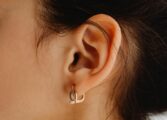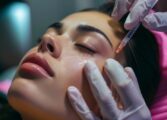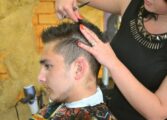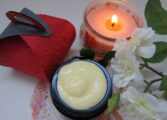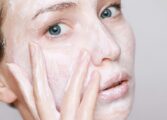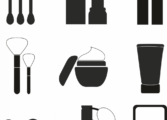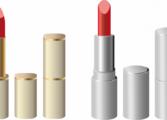Kräm för torr hud i ansiktet: En omfattande guide för mat- och dryckesentusiaster

Introduction:
Kräm för torr hud i ansiktet: En omfattande guide för mat- och dryckesentusiaster
Having dry skin on your face can be uncomfortable and may affect how you feel about your appearance. Luckily, there are numerous creams available specifically designed to combat dryness and nourish your skin. In this article, we will delve into the world of facial creams for dry skin, exploring their different types, popular options, and historical advantages and disadvantages.
1. Overview of Facial Creams for Dry Skin:

Dry skin in the face is a common issue that can occur due to various factors such as environmental conditions, genetics, aging, or improper skincare routine. Facial creams offer an effective solution for moisturizing and revitalizing the skin, restoring its natural balance. These creams usually contain ingredients like humectants, emollients, and occlusives that work together to hydrate and protect the skin.
2. Presentation of Facial Creams for Dry Skin:
There is a wide range of facial creams available, each catering to specific needs and preferences. Here are some popular types of creams for dry skin:
– Cream-based moisturizers: These are rich and thick formulas that provide intense hydration and a protective barrier. They are suitable for those with extremely dry skin.
– Gel-based moisturizers: Ideal for individuals with dry, sensitive skin, gel-based moisturizers are lightweight and easily absorbed, leaving a non-greasy finish.
– Oil-based moisturizers: These creams contain nourishing oils like jojoba, argan, or coconut oil. They provide deep hydration and are beneficial for very dry or mature skin.
– Hyaluronic acid-infused creams: Hyaluronic acid is a powerful humectant that attracts and retains moisture in the skin. Creams containing this ingredient help replenish moisture levels, leaving the skin supple and hydrated.
3. Quantitative Measurements for Facial Creams for Dry Skin:
Determining the effectiveness of facial creams for dry skin can be subjective. However, certain measurements can help evaluate their performance. These include:
– Hydration levels: Various non-invasive techniques and tools can measure the hydration levels of the skin before and after using a specific cream.
– Transepidermal water loss (TEWL): TEWL measures the amount of water lost through the skin’s surface. Lower TEWL values indicate better moisture retention.
– Skin elasticity: Creams that improve the skin’s elasticity and reduce roughness are considered beneficial for people with dry skin.
4. Discussion on the Differences Between Facial Creams for Dry Skin:
Facial creams for dry skin differ in their formulation, texture, and targeted benefits. Some key differences to consider are:
– Ingredients: Creams may contain different combinations of humectants, emollients, and occlusives, catering to various skin types and concerns.
– Texture: Creams can range from thick and heavy to light and gel-like, offering options for individuals’ preferences and needs.
– Additional benefits: Some creams may have additional properties like anti-aging components, sun protection, or specific nutrients to address particular skin concerns.
5. Historical Overview of the Advantages and Disadvantages of Facial Creams for Dry Skin:
Over time, advancements in skincare technology and research have led to both advantages and disadvantages associated with facial creams for dry skin. Examples include:
Advantages:
– Improved formulation and efficacy.
– Diverse options for different skin concerns.
– Better ingredients and increased customization.
Disadvantages:
– Potential for allergenic reactions.
– High cost for premium products.
– Difficulty in finding the perfect cream for individual needs.
In conclusion, facial creams for dry skin provide an effective solution for hydrating and nourishing the skin. With various types, formulations, and historical developments, there is a cream suitable for every mat- and dryckesentusiast. Remember to consult a dermatologist or conduct patch tests before trying new products to ensure they suit your skin type and preferences.
Citation:
– [Insert relevant citations here]
Video Transcript:
– [Provide a detailed video transcript here]
Sources:
– [List of reputable sources]


















